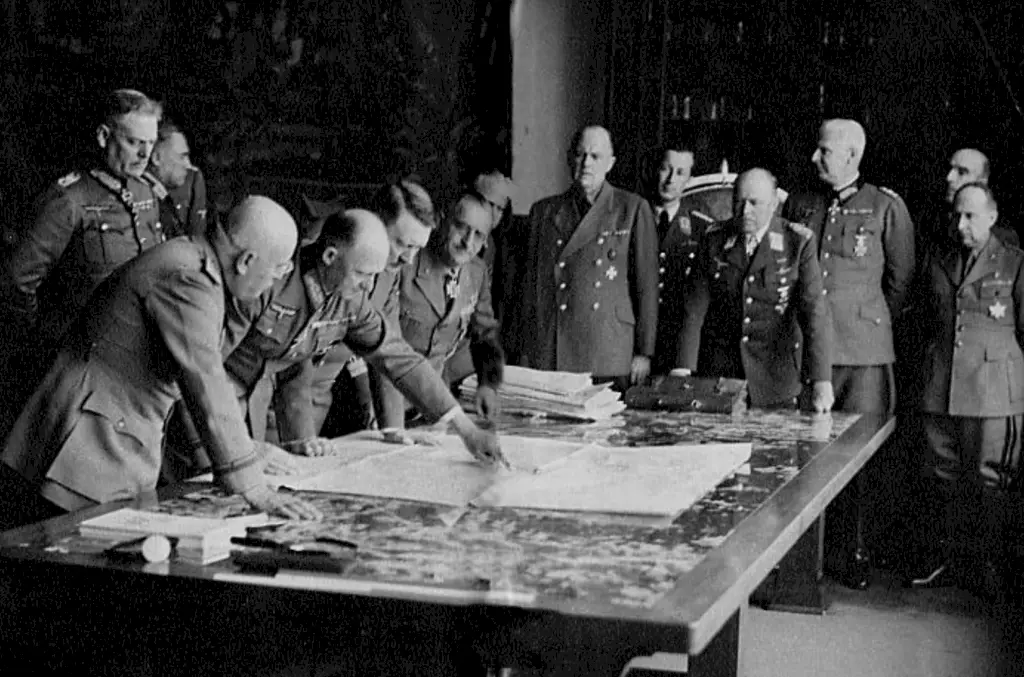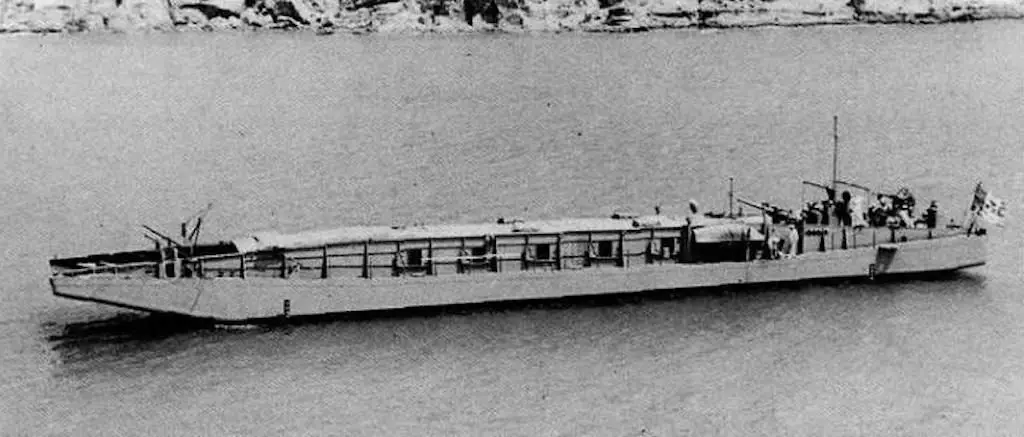Esigenza C3 / Operation Herkules
The plan for the invasion of Malta developed in mid-1941 by Italian commanders and subsequently included the support of Field-Marshal Albert Kesselring, who was the German Commander in Chief – South (Oberbefehlshaber Süd). The operation, codenamed Operation Herkules, or Esigenza C3 or Operazione C3 by the Italians, was set to launch in mid-July 1942.

Mussolini meeting with Hitler along with an assortment of Italo-German staff on 29-30 April 1942 to discuss the Axis Mediterranean & North African strategy. On far right is General Antonio Gandin, chief planner of Esigenza C3 / Operation Herkules.
Siege Malta 1940-1943
SIEGE: MALTA 1940-1943 [Pen & Sword Military Classics] by Ernle Bradford is a wonderful book that describes the whole operation conducted by Italo-German forces in Malta. Malta is an island roughly the size of London, England. However, this small island is arguably the main reason Axis forces lost the Desert War. For instance, Malta’s great Grand Harbour provided a safe port for Allied warships. The island also played a large role in launching airstrikes on Axis convoys headed for Africa. Because British aircraft based in Malta sunk so many Axis convoys, Mussolini concluded the only hope to save the Axis forces in Africa is to invade and conquer Malta.
Key Phases of Operazione C3
- An airborne attack and follow up landing force in the southern heights of Malta which avoids the heavily fortified defenses of the “Victorian Line” in northwest Malta.
- Italo-German paratroopers seize the three airfields of Luqa, Takali, and Hal Far, thus allowing aircraft delivered supplies and troops.
- Main amphibious assault of two infantry divisions seizing Marsaxlokk and subsequently the remainder of the island.
- Another Italian Infantry division to attack and occupy Gozo to be used as a logistics base.
OOB of Operation Herkules / Esigenza C3
Oberbefehlshaber Süd/Regia Aeronautica (under Kesselring/Fougier)
FliegerKorps XI (under General Student)
- 7th Flieger Division (under General Erich Petersen)
- Folgore Division (under General Enrico Frattini)
- La Spezia Division (under General D. Gavino Pizzolato)
FliegerKorps II and FliegerKorps X
- Air Interdiction and Close Air Support
- Transport
Italian Air Fleet
- Air Interdiction and Close Air Support
- Transport
Regia Marina
(under Admiral Arturo Riccardi)
Italian Strategic Naval Forces
Forze Navali Speciale (under Admiral Vittorio Tur)
- Escort Ships (Littorio, Vittorio Veneto, Caio Duilio and Andrea Doria, four heavy cruisers, eight light cruisers, and 21 destroyers.
- Transport Ships
- Landing Craft
- San Marco Infantry Regiment
- CC.NN Battalions
Transport and landing craft include two former railway ferries to transport heavy tanks; 50 special motor-sail vessels, four-passenger steamships; five motor vessels; four converted minelayers; four tankers and 26 lagune motorboats. The Kriegsmarine also transferred 27 Marinefährprahm (landing craft) to support the operation.

Image of Italian landing craft MZ 701 taken on 30 May 1942. These landing crafts would transport infantry to the shores of Malta.
Regio Esercito
Comando Superiore Tattico (under General Armando Vecchiarelli)
XX Corps (under General Vittorio Sogno)
- Superga Infantry Division
- Livorno Infantry Division
- X Raggruppamento Corazzato (Armored Group)
XVI Corps (under General Carlo Rossi)
- Assietta Infantry Division
- Napoli Infantry Division
In short, Operation Herkules called for 70,000 troops to successfully conquer Malta.
Malta OOB
A detailed OOB of Malta Defenses in early July 1942 can be found here.
Why the Invasion of Malta Never Materialized
Mid 1942 was the perfect opportunity to implement Operation Herkules. The threat of RN aircraft carriers had minimized. In fact, the British did not possess the luxury in sending many carriers into the Mediterranean. The British did not want to risk sending such a large force when at that time, the Axis held complete air superiority in the skies over Malta.
By mid-1942, the central Mediterranean still fell under the control of the Regia Marina, even with the growing oil shortage. Additionally, Italian torpedo boats heavily mined the waters surrounding Malta.
Hitler’s Second Thought
At first, Kesselring convinced Hitler to conduct this co-invasion. But Hitler’s real interest pertained to the Soviet conquest. Additionally, Hitler witnessed the early successes of Rommel’s Axis forcing in retaking Tobruk. Hitler also learned of the disabling of two British battleships by Italian frogmen in Alexandria. Because of these victories, Hitler considered the invasion of Malta as unwarranted.
Lessons Learned from Operation Merkur
Above all, Hitler did not want to see a repeat of the high human costs associated with the use of paratroopers. Looking back to what happened during Operation Merkur, Hitler told General Student:
Crete has shown that the day of the paratroops is over.
In conclusion, Hitler ultimately convinced Mussolini to hold off on the invasion “for now” since the Desert War now showed a new chance to gain an Axis victory.
In short, the successful protection of Malta by the United Kingdom hampered Italy and Germany’s chance to win the desert war.
Additional references
The Axis and the Intended Invasion of Malta in 1942: a Combined Planning Endeavor by Major Alessandro Vivarelli, Italian Army, School of Advanced Military Studies, Master Thesis – 2014.